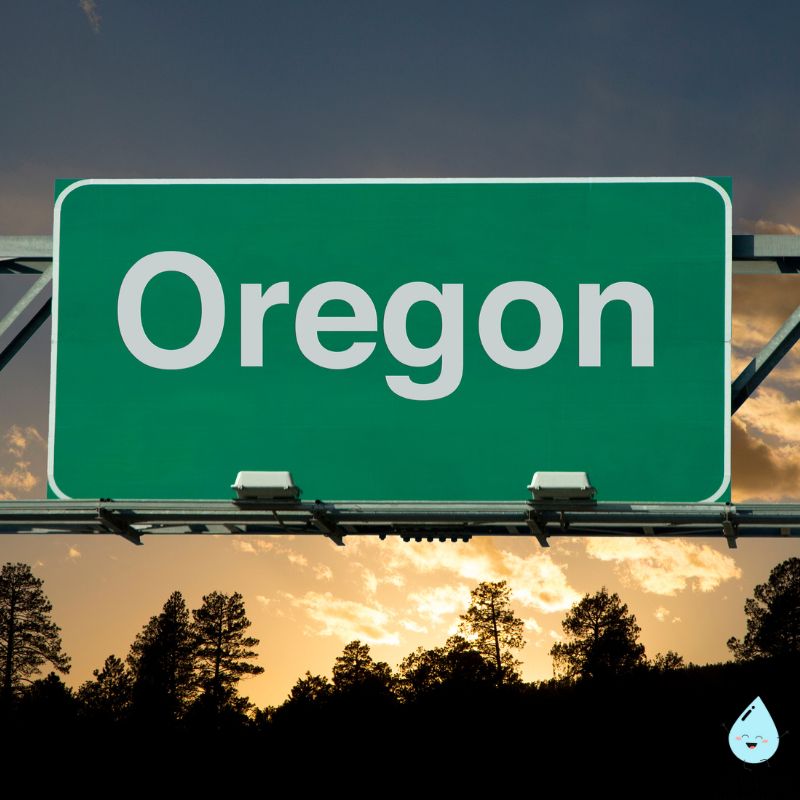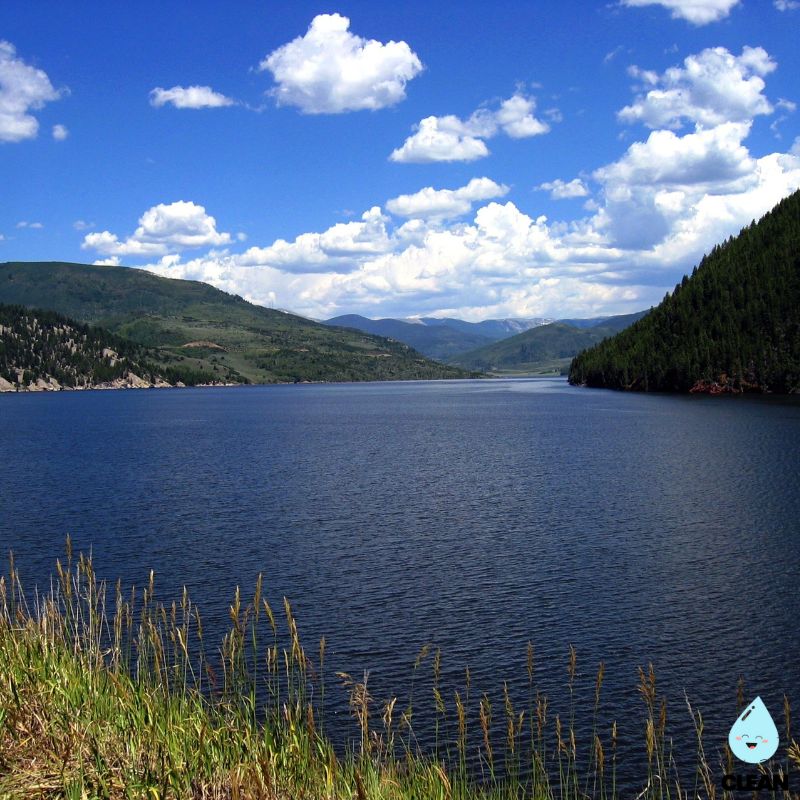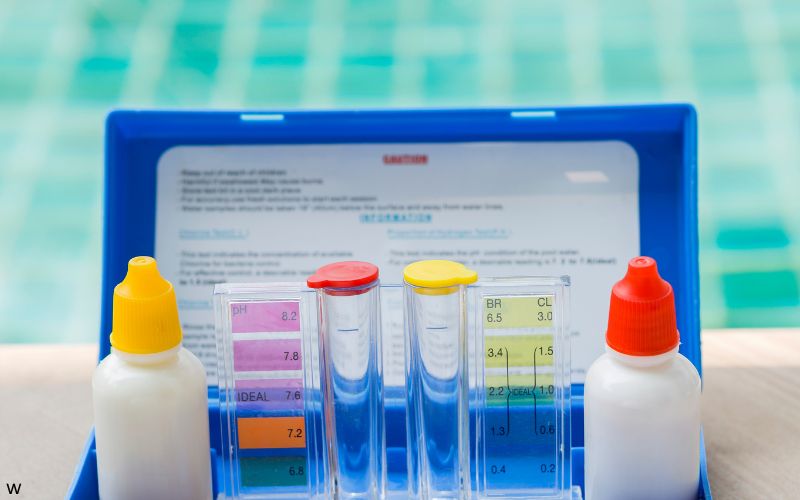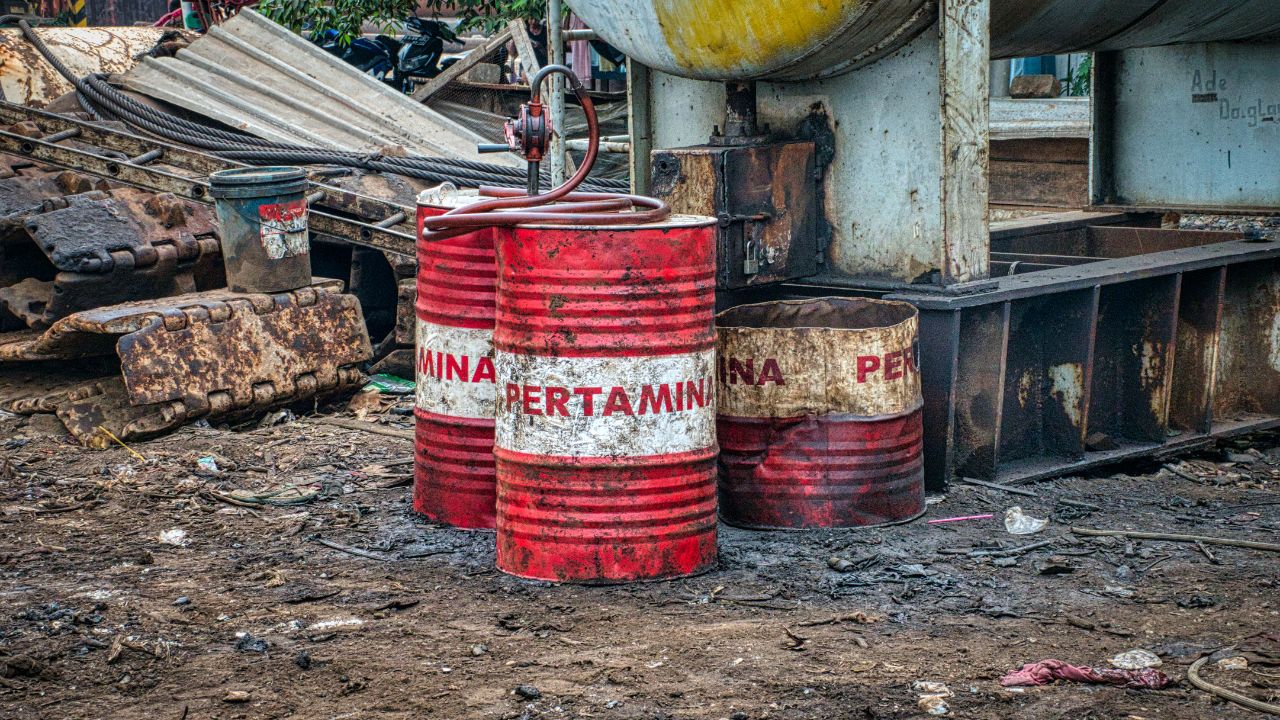Oregon Water Quality at a Glance
Regional contamination concerns
Is Oregon Water Safe to Drink?
Varies Significantly by Region – Oregon’s water quality presents a tale of two states. Portland and many urban areas have excellent, PFAS-free water from protected watersheds, while Eastern Oregon faces a decades-long crisis with nitrate contamination affecting thousands of rural residents. Statewide, 36% of monitoring sites show poor to very poor water quality, with 800,000 Oregonians potentially exposed to PFAS contamination and ongoing agricultural pollution in rural areas.
⚠️ Key Concerns for Oregon Residents
- PFAS “Forever Chemicals”: 35 public water systems have detectable PFAS, with 24 exceeding new EPA standards; 800,000 residents potentially at risk
- Eastern Oregon Nitrate Crisis: 30+ year contamination in Morrow and Umatilla counties from agricultural runoff; many wells exceed federal safety limits
- Regional Disparities: Urban areas like Portland have pristine water, while rural communities struggle with agricultural and industrial contamination
- Heavy Metals & Pesticides: Mining operations in Crook County have contaminated wells with manganese, iron, and aluminum above health advisory limits
✅ Oregon Water Success Stories
- Portland’s Excellence: Bull Run Watershed provides pristine water to nearly 1 million people with no PFAS detected and minimal contamination
- Protected Watersheds: State designations for Outstanding National Resource Waters at Crater Lake, Klamath Basin, and Waldo Lake
- Proactive Testing: Oregon leads in voluntary testing for unregulated contaminants and early PFAS monitoring programs
- State Action: New 8-year Nitrate Reduction Plan and updated groundwater protection regulations being implemented
Read the full report below for detailed analysis, regional data, and actionable recommendations for Oregon residents.
Oregon – The Pacific Northwest’s Water Guardian – Water Quality Report 2025: PFAS Testing, Infrastructure Concerns & Safety across your state
Oregon’s water infrastructure serves approximately 4.3 million residents across diverse geographical regions, from the Columbia River Gorge in the north to the Rogue Valley in the south. The state operates through a network of approximately 3,400 public water systems, ranging from large municipal utilities like Portland Water Bureau, which serves over 600,000 customers, to smaller rural systems providing essential services to remote communities. Oregon’s water sources include the Columbia, Willamette, and Snake river systems, along with numerous reservoirs and abundant groundwater aquifers that supply both urban centers and agricultural areas.
Despite Oregon’s reputation for abundant water resources, the state faces significant emerging challenges. According to the American Society of Civil Engineers’ 2024 Infrastructure Report Card, Oregon’s drinking water infrastructure received a C grade, reflecting progress in system reliability but highlighting ongoing concerns about aging infrastructure, emerging contaminants including PFAS “forever chemicals,” and climate-related water scarcity. The state has received over $100 million in federal infrastructure investments from the Biden-Harris Administration’s Bipartisan Infrastructure Law to address these challenges, focusing on drinking water safety, wastewater treatment upgrades, and emerging contaminant removal. Oregon’s commitment to water quality improvement is demonstrated through partnerships between the Oregon Health Authority, Department of Environmental Quality, local utilities, and federal agencies working to ensure safe, reliable water access for all residents while addressing groundwater depletion and contamination challenges.

Oregon Water Quality: Current Status (2024-2025)
Statewide Compliance and Testing
- Overall Compliance: More than 99 percent of Oregon’s public water systems meet EPA standards for safe drinking water, though emerging contaminants like PFAS present new challenges requiring ongoing monitoring and potential treatment upgrades.
- PFAS Monitoring: Approximately 800,000 Oregonians may rely on private or public well water potentially contaminated with PFAS, with 35 public water systems having detectable PFAS and 24 exceeding new EPA standards.
- Infrastructure Investment: Over $100 million in federal funding through the Bipartisan Infrastructure Law has been allocated to Oregon for water infrastructure improvements, including drinking water safety upgrades and emerging contaminant treatment systems.
Major Water Sources and Challenges
- Bull Run Watershed: Serves Portland and surrounding areas with high-quality unfiltered water, though new filtration systems will be installed by September 2027 to address Cryptosporidium and other contaminants.
- Columbia River System: Primary source for multiple communities along the Columbia Gorge, with groundwater sources providing backup supply and serving communities throughout the state.
- Groundwater Depletion Crisis: Over 1,200 wells have gone dry since 2021, with aquifers being depleted faster than natural recharge, particularly affecting rural communities and agricultural areas.
Emerging Contaminant Response
- PFAS Regulation Implementation: New EPA drinking water standards for PFOA and PFOS (4 parts per trillion) take effect in 2029, requiring water systems to test and potentially treat for these “forever chemicals” by that deadline.
- Treatment Technology Deployment: Water utilities are implementing advanced treatment technologies including activated carbon filtration and reverse osmosis systems to remove PFAS and other emerging contaminants.
- State Regulatory Framework: Oregon Department of Environmental Quality is developing comprehensive PFAS regulations, with proposed rules expected for consideration by the Environmental Quality Commission in September 2025.
Rural and Disadvantaged Communities
- Private Well Challenges: Over 400,000 Oregonians rely on largely unregulated private water sources, including wells affected by nitrate contamination in eastern Oregon’s Lower Umatilla Basin Groundwater Management Area.
- Nitrate Contamination Crisis: Morrow and Umatilla counties face ongoing nitrate contamination from agricultural sources affecting thousands of domestic wells, with Morrow County declaring a local public health emergency in 2022.
- Federal and State Support: Enhanced funding streams through the Drinking Water State Revolving Fund provide grants and low-interest loans to help communities address infrastructure needs and emerging contaminants.
Looking Forward: 2025-2030
Oregon’s water quality landscape faces unprecedented challenges as the state grapples with climate change impacts, groundwater depletion, and emerging contaminants. The 2024 Integrated Water Resources Strategy acknowledges that Oregon is not currently meeting its water needs, with declining stream flows and aquifer levels threatening long-term sustainability. However, substantial federal infrastructure investments, combined with innovative treatment technologies and enhanced regulatory frameworks, position Oregon to address these challenges proactively. Success will require continued collaboration between state agencies, water utilities, agricultural stakeholders, and communities to balance water conservation with economic needs while ensuring equitable access to safe drinking water. The state’s commitment to renewable energy and environmental stewardship provides a strong foundation for building resilient water systems capable of serving future generations despite changing climate conditions.
Recommendations for Oregon Residents

Know Your Water Source
Contact your water utility to request annual water quality reports and ask about PFAS testing results. Visit the Oregon Health Authority’s website to access local system testing data and understand any contaminants of concern in your area.

Support Sustainable Water Management
Stay informed about Oregon’s Integrated Water Resources Strategy and support policies that balance water conservation with community needs. Participate in public meetings about groundwater management and infrastructure investments.

Consider Private Well Testing
If you have a private well, especially in rural areas, test for nitrates, PFAS, and other contaminants annually. For areas with known contamination, consider NSF-certified filtration systems specifically tested for contaminant removal.

Report Water Quality Concerns
Contact your local water utility immediately for taste, odor, or color concerns. Report suspected contamination to the Oregon Health Authority at (971) 673-0440 or Oregon DEQ at (503) 229-5696 for investigation.

Practice Water Conservation
Support Oregon’s water sustainability by implementing conservation measures like efficient irrigation, rainwater harvesting, and drought-resistant landscaping. Reducing demand helps protect groundwater levels and system reliability.
Oregon Cities We Cover
Portland Water Quality
Comprehensive analysis of Portland Water Bureau, serving over 600,000 customers with high-quality Bull Run Watershed water and Columbia South Shore Well Field groundwater. Includes information on filtration upgrades, PFAS monitoring, and infrastructure modernization.
Frequently Asked Questions
Is Oregon’s tap water safe to drink?
More than 99 percent of Oregon’s public water systems meet federal drinking water standards and are safe for consumption. However, some areas face challenges with emerging contaminants and groundwater depletion.
The Oregon Health Authority requires comprehensive testing across all public water systems. Portland’s water from the Bull Run Watershed is particularly high-quality, though filtration systems will be added by 2027. About 800,000 Oregonians may use water potentially affected by PFAS contamination, and over 400,000 rely on private wells that require individual testing and monitoring. Residents should review their utility’s annual water quality report and stay informed about local conditions.
What are the main water quality concerns in Oregon?
Oregon faces several key water quality challenges including PFAS contamination, groundwater depletion, and nitrate pollution in agricultural areas.
PFAS “forever chemicals” have been detected in groundwater sources serving approximately 800,000 Oregonians, particularly along the I-5 corridor. Over 1,200 wells have gone dry since 2021 due to over-pumping and drought conditions. In eastern Oregon’s Lower Umatilla Basin, thousands of private wells are contaminated with nitrates from agricultural sources, prompting Morrow County to declare a local public health emergency in 2022. The EPA’s new PFAS drinking water standards will require water systems to test and potentially treat for these chemicals by 2029.
How can I find out about my local water quality?
Oregon residents can access comprehensive water quality information through several resources:
• Annual Water Quality Reports: Contact your water utility directly for their Consumer Confidence Report, which details all testing results and any violations or concerns
• Oregon Health Authority: Visit OHA’s drinking water program website to access testing results and compliance information for your local water system
• Private Well Testing: Private well owners should test annually for nitrates, bacteria, and other contaminants through accredited laboratories
• PFAS Testing Data: Water systems are now required to test for PFAS under the EPA’s Unregulated Contaminant Monitoring Rule, with results available through utility reports
Why is Oregon facing groundwater challenges?
Oregon’s groundwater challenges stem from multiple interconnected factors:
Over-Allocation: Current rules allow pumping that exceeds natural recharge rates, leading to aquifer depletion and dry wells
Climate Change: Six of the last 10 years have been among the driest on record, reducing snowpack and stream flows that recharge aquifers
Agricultural Demand: Irrigation accounts for approximately 85% of the state’s water use, straining groundwater resources in some basins
Population Growth: Increasing urban development and rural residential growth adds pressure to existing water supplies
The Oregon Water Resources Department is proposing new groundwater management rules to address these challenges while balancing agricultural, municipal, and environmental needs. The state’s 2024 Integrated Water Resources Strategy acknowledges that Oregon is not currently meeting its water needs sustainably.
Quality News About Your Water
Get the comprehensive water quality news coverage you need with our dedicated US Water News Service. From coast to coast, we deliver in-depth reporting and expert analysis on PFAS contamination, EPA regulatory changes, infrastructure developments, and emerging water safety issues affecting communities nationwide. While mainstream media only covers the biggest stories, we provide the detailed, ongoing coverage that helps you understand the full scope of America’s water challenges. Whether you’re a concerned citizen, water professional, or community leader, our daily updates and analytical insights keep you informed about the issues that matter most to public health and environmental safety.
Contaminants of Concern

PFAS “Forever Chemicals”
Source: Industrial manufacturing, firefighting foam use at airports and military installations, consumer products including non-stick cookware and waterproof textiles
Health Effects: Linked to kidney and testicular cancer, liver damage, immune system suppression, high cholesterol, and developmental effects in children
Current Status: Approximately 800,000 Oregonians may rely on water potentially contaminated with PFAS, with 35 public water systems having detectable PFAS and 24 exceeding new EPA standards EPA Limits: 4 ppt for PFOA and PFOS individually, with hazard index for other PFAS compounds taking effect in 2029

Nitrate Contamination
Source: Agricultural fertilizers, animal feed lots, food processing facilities, and wastewater biosolids applied to farmland, particularly concentrated in eastern Oregon’s Lower Umatilla Basin
Health Effects: High levels can cause reproductive problems, respiratory issues, and increased cancer risk, with particular concern for infants who can develop methemoglobinemia (“blue baby syndrome”)
Current Status: Thousands of private wells in Morrow and Umatilla counties exceed safe drinking water standards, with Morrow County declaring a local public health emergency in 2022 EPA Limits: 10 milligrams per liter (mg/L) maximum contaminant level for nitrates in drinking water
Please read – our information
The information presented on cleanairandwater.net is compiled from official water quality reports, trusted news sources, government websites, and public health resources. While we strive for accuracy and thoroughness in our presentations, we are not scientists, engineers, or qualified water quality professionals.
Our mission is to present water quality information in an accessible, real-world format that helps people understand what’s in their water and make informed decisions about their health and safety. We believe that complex environmental information should be available to everyone in a format that’s easy to understand.
We make every effort to ensure our content is current and accurate, but we cannot guarantee that all information is complete or error-free. This website should not replace official communications from your local water utility or health department. We always recommend consulting official sources for the most up-to-date information regarding your specific water system.
Clean Air and Water is not liable for any unintentional errors, omissions, or outdated information. The content on this site is provided for informational purposes only and should not be considered professional advice.


